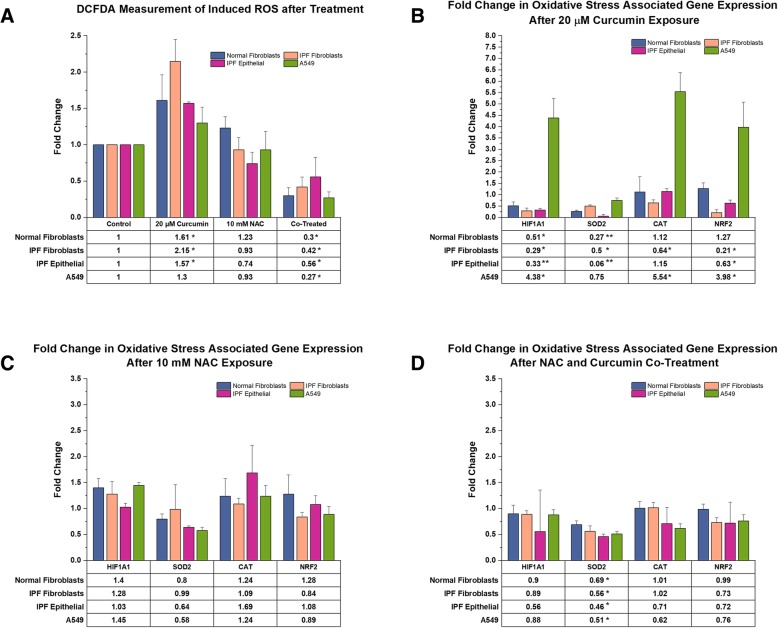Fig. 6.
Induction of ROS and change in Oxidative Stress Associated gene expression after 24-h challenge in both epithelial and fibroblast cell lines: (a) 20 μM curcumin induces significant increases in ROS generation in all primary cell lines (IPF-F n = 3, NHLF n = 3, IPF-E n = 3), but no significant increase in A549 cells (n = 3). 10 mM NAC treatment has no significant induction of ROS, however co-treatment with 10 mM NAC and 40 μM curcumin results in a significant decrease in ROS in all cell types. (b) Challenge with 20 μM curcumin results in a decreased expression of Hypoxia inducible factor 1α (HIF1) and Superoxide Dismutase 2 (SOD2) in IPF-F (n = 4), NHLF (n = 3), IPF-E (n = 3). Expression of Catalase (CAT) is decreased in IPF derived fibroblasts while Nuclear Factor erythroid 2-related factor 2 (NRF2) expression is decreased in IPF-F and epithelial cells. A549 cells demonstrate an increase in expression of HIF1, CAT, and NRF2 after challenge with 20 μM curcumin. (c) 10 mM NAC challenge results in a significant decrease in SOD2 expression in primary IPF epithelial cells and A549s but no effect on any other gene in the assayed cells. (D) Co-treatment with 10 mM NAC and 40 μM curcumin induces decreased SOD2 expression in all cell types. * indicates p value < 0.05 and ** indicates p value < 0.005

